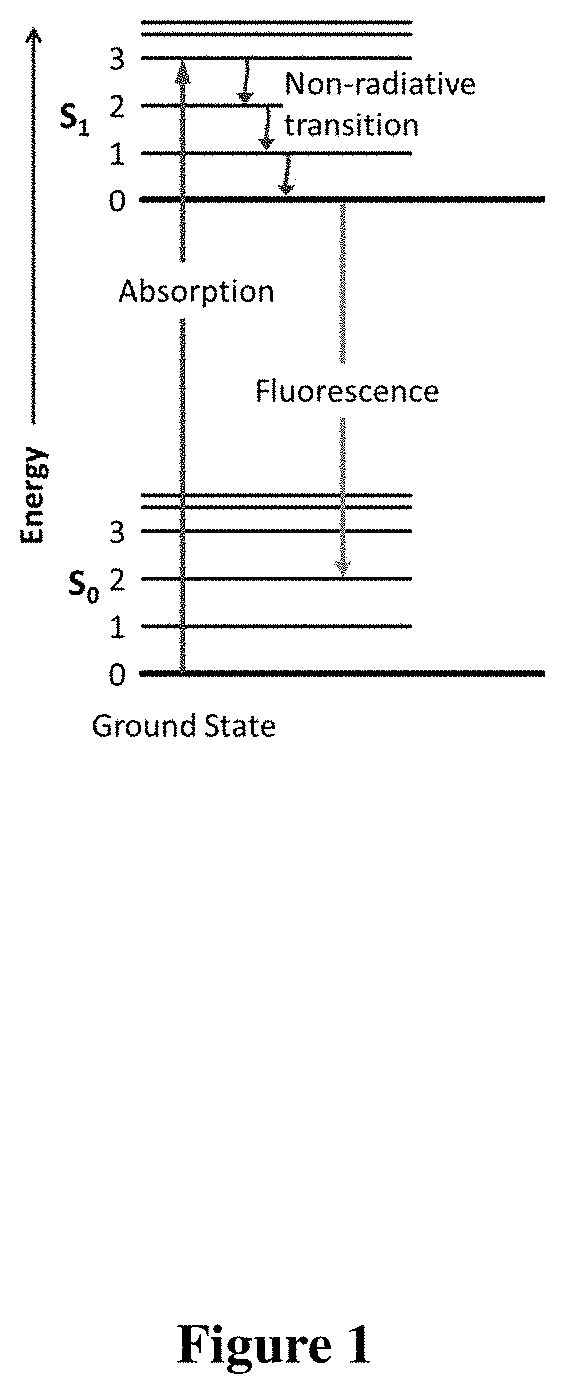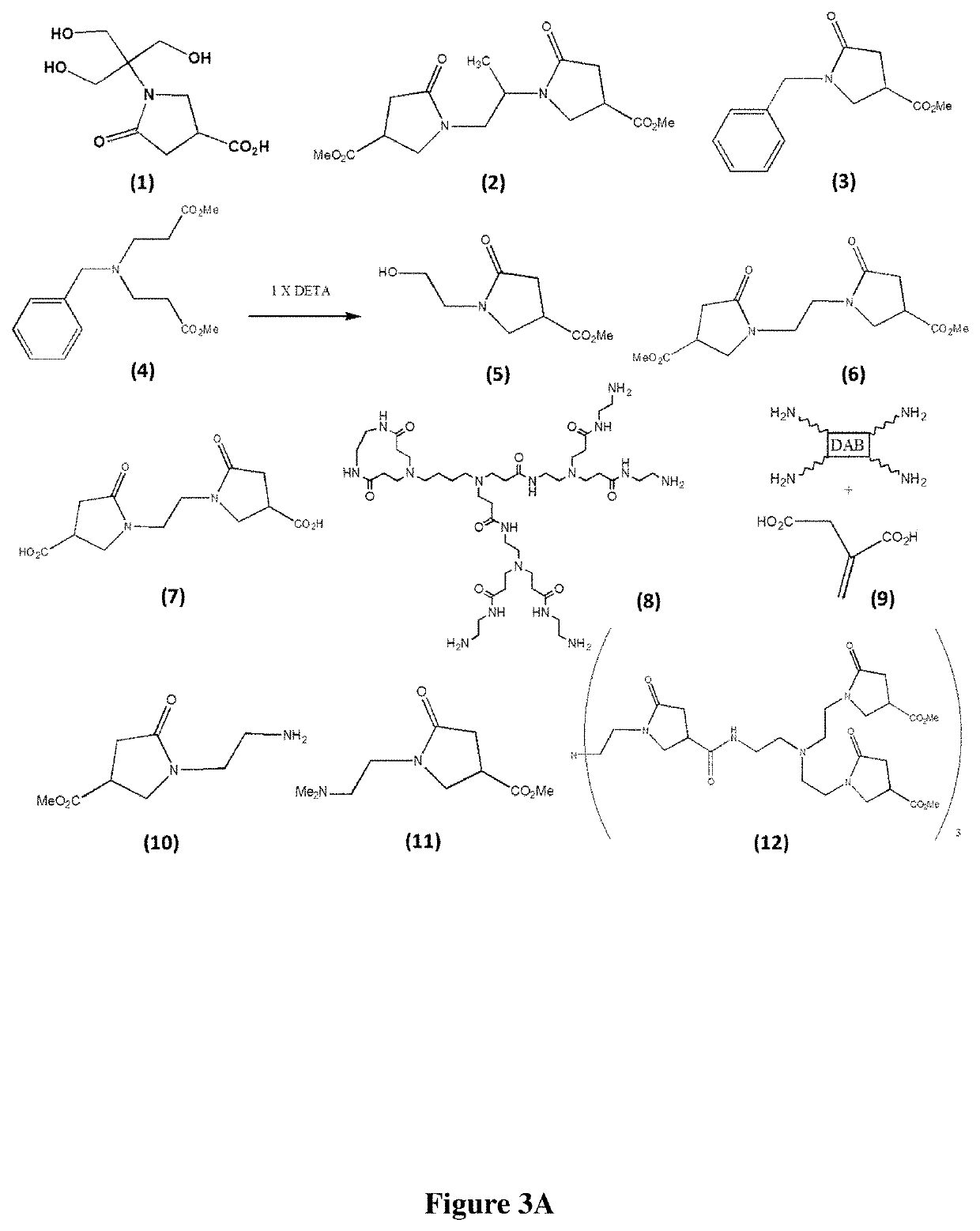Pyrrolidone derivatives, oligomers and polymers
a technology of pyrrolidone and derivatives, applied in the field of pyrrolidone derivatives, oligomers and polymers, can solve the problems of affecting the use of synthetic polymer compositions as injectables by the human body, and affecting the effect of pyrrolidone production,
- Summary
- Abstract
- Description
- Claims
- Application Information
AI Technical Summary
Benefits of technology
Problems solved by technology
Method used
Image
Examples
example 1
reparation of N-alkyl-4-carbomethoxypyrrolidones from Primary Amines
[0259]Mono 1° amines (i.e., —NH2) containing a variety of functionalities that exhibit orthogonal reactivity to carboxylic acids may be converted to the corresponding 4-carboxylic acid pyrrolidones in high yield. These products were obtained by heating various stoichiometric quantities of the 1° amine and carboxylic acid in the presence of toluene at ˜125° C. using a Dean-Stark apparatus. After removal of predicted stoichiometric amounts of water (˜2-3 hrs.), the products are obtained as hygroscopic, powdery solids or brittle glasses exhibiting some level / degree of fluorescence when exposed to UV radiation (265-395 nm). The products were characterized by FTIR, 1H-NMR, 13C-NMR and UV / vis-fluorimetry. (FIG. 3C, compounds 26-37, Table 2)
[0260]Stoichiometry: [1° amine moiety: ITA]=[1:1] provides compounds of Formula (I) where W is 1; R2 is —CO2H; m is 1; and Q is X—R—N; and [1° amine moiety: ITA / ITE]=[4:1] provides com...
example 2
reparation of N-alkyl-pyrrolidone-4-carboxylic Acids from Primary Amines
[0264]To 50 mmol of ITA (6.5 g) was added 50 mmol of primary amine. The mixture was heated at 125° C. for 2 h. The mixture was triturated with MeOH to give a white precipitate that was isolated by filtration.
example 3
reparation of N-alkyl-pyrrolidone-4-(N-2-aminoethyl)carboxamides from N-alkyl-carbomethoxypyrrolidones
[0265]A solution of N-alkyl-4-carbomethoxypyrrolidone in MeOH (50% by weight) was added to excess EDA (25 mol per mol of ester) with stirring. The solution was maintained at RT for 4 days. Excess EDA was removed by distillation, in vacuo, followed by azeotropic distillation with toluene, in vacuo, to give the desired product.
PUM
| Property | Measurement | Unit |
|---|---|---|
| Size | aaaaa | aaaaa |
| Nanoscale particle size | aaaaa | aaaaa |
| Nanoscale particle size | aaaaa | aaaaa |
Abstract
Description
Claims
Application Information
 Login to View More
Login to View More - R&D
- Intellectual Property
- Life Sciences
- Materials
- Tech Scout
- Unparalleled Data Quality
- Higher Quality Content
- 60% Fewer Hallucinations
Browse by: Latest US Patents, China's latest patents, Technical Efficacy Thesaurus, Application Domain, Technology Topic, Popular Technical Reports.
© 2025 PatSnap. All rights reserved.Legal|Privacy policy|Modern Slavery Act Transparency Statement|Sitemap|About US| Contact US: help@patsnap.com



